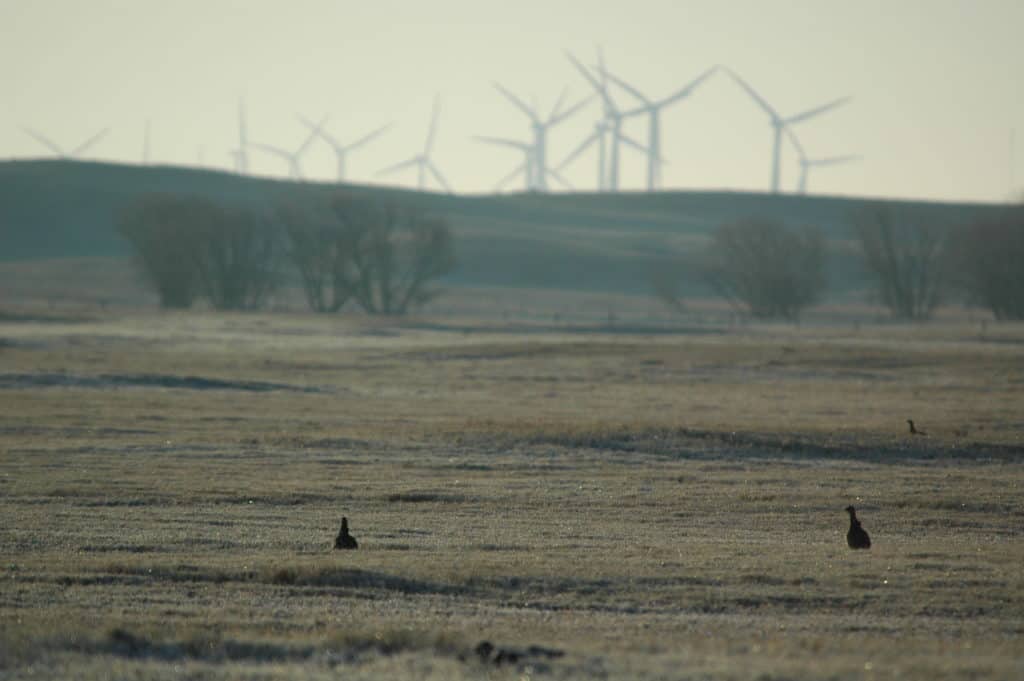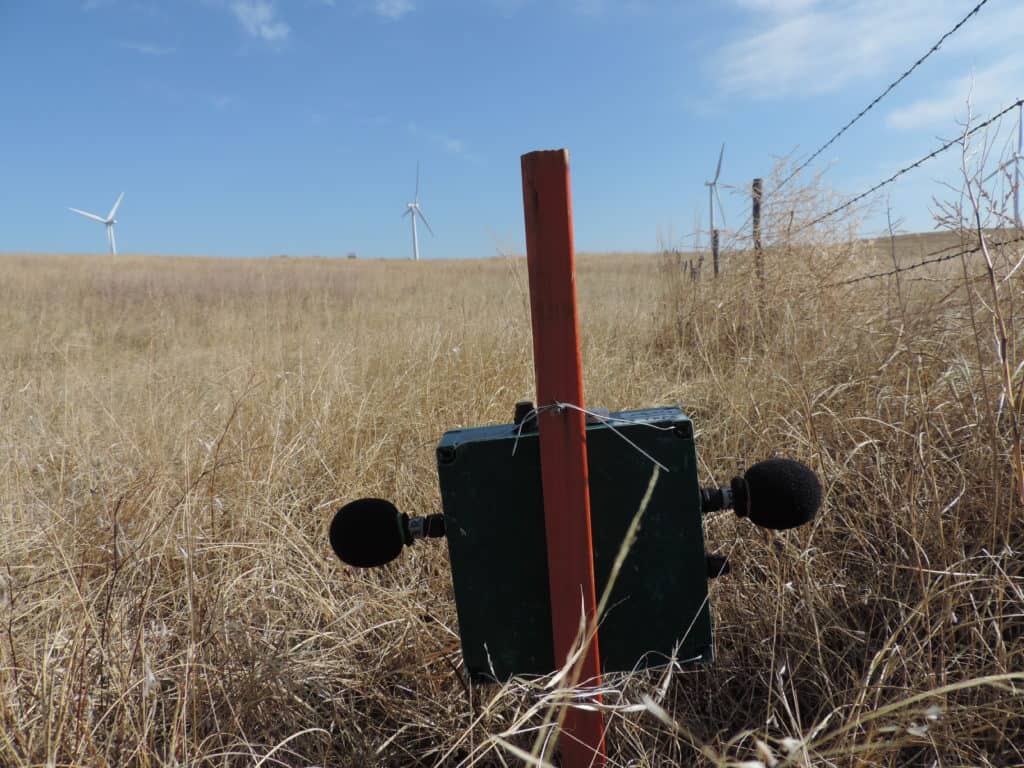Share this article
Wind turbines don’t out-boom prairie-chicken lek potential
The sound of wind turbines doesn’t put a damper on the nearby mating rituals of greater prairie-chickens in Nebraska.
“In terms of what’s happening in that lek, it may not matter that much to prairie-chickens,” said Larkin Powell, a professor of conservation biology at the University of Nebraska-Lincoln and one of the co-authors of a study published recently in Ethology.
Greater prairie‐chicken (Tympanuchus cupido pinnatus) males gather together in the breeding season to make booming noises and show off their feathers as a sign of dominance to other males in order to mate with females in the area. The gatherings are called leks, and the collective noise coming from a lek is known as a boom chorus.

Boom vocalizations at leks closest to wind turbines were slightly shorter than normal, researchers found, and they had “more of a punch.” ©Larkin Powell
Researchers were concerned that noise coming from wind turbines installed in the Sandhills region of Nebraska, which has some of the best potential in the world for wind power in the U.S., would impact those leks.
“The concern was that if prairie-chickens did have a response to these wind energy facilities, in effect it might be like plowing up parts of the Sandhills from the birds’ perspective,” Powell said. “Those could become useless sites to them and disrupt what was the Nebraska and Kansas core for prairie-chickens.”
To understand how wind noise might be affecting the sounds made by these boom choruses, Powell and his colleagues set out to understand more about the interaction of noise in the Sandhills region and whether turbines are affecting prairie-chicken mating rituals.
Graduate student Cara Whalen set up sound recordings around leks and turbines to get baseline information about how noisy they were. Then, the team recorded areas where leks and turbines were close to each other.
“If you think about talking over a loud fan, the sound of your voice that’s above that level was essentially what we were measuring,” Powell said.
The recordings showed the energy facilities added general background noise within 3,280 feet of turbines, and that this noise drowned out at least some of the overall boom chorus of leks within 2,600 feet of turbines. This also seemed to affect the noise that the males made in leks near the turbines.

Sound recording devices capture the noise made by wind turbines. ©Larkin Powell
Boom vocalizations at leks closest to wind turbines were slightly shorter than normal, he said, and they had “more of a punch.” The birds in leks closer to the turbines also spent more time doing mating behavior like foot-stomping or other displays and less time watching for predators or feeding.
The researchers wanted to find out more about how these changes in behavior might affect female prairie-chickens passing by. They tested the assumption that the boom choruses might be a way for females to tune in to leks to find suitable males during mating seasons. Some previous research conducted in Kansas had shown that leks near wind turbines had a higher chance of dissolving and disappearing, and researchers proposed the sound from turbines could mask the noise of males at nearby leks for females in the area.
But their research showed that it may not matter. Rather than booming loudly when there were no females at the lek, the boom chorus was loudest when there were more females on the lek. As a result, Powell said the boom chorus might just be a byproduct of competition between males the same way that humans might hear noise at a bar while passing by.
“The function of the noise isn’t to attract you to the bar, but it’s just because there’s stuff happening in the bar,” Powell said. “This advertising hypothesis may not be as important as people used to think it was.”
Instead, Powell said that the females are likely finding the leks using other means like visual cues or even just memory since the leks often happen in the same areas year after year.
Powell said that other components of a larger study on prairie-chickens and wind turbines suggested that roads can be an important consideration once the females choose nesting and brooding locations. Birds are less likely to nest near roads, and those birds that do nest near roads spend less time away from their nests during incubation. Since roads are often built to connect turbines, the turbines may affect prairie-chickens indirectly due to their association with roads.
Header Image: Researchers tested whether wind turbines masked the boom choruses made by male greater prairie-chickens during mating displays in the Sandhills area in Nebraska. ©Larkin Powell








